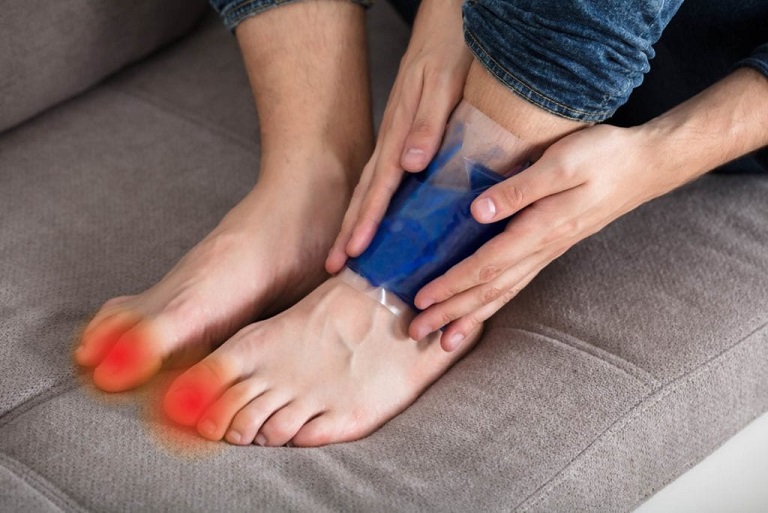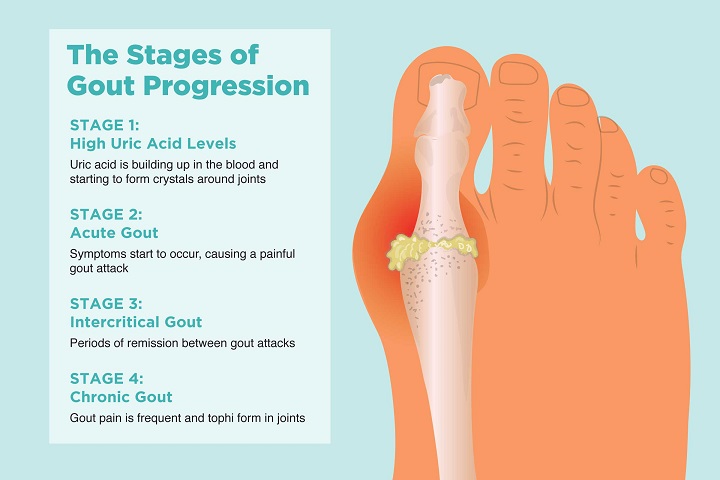
This is somewhat of a loaded question, overall. If we are speaking of an actual Gout “attack”, then yes, for the most part, it will go away. Most Gout attacks will eventually subside, with or without treatment. The attacks will generally reach its peak 12-24hrs after onset and then slowly begin to resolve, usually with full recovery in one to two weeks. Some Gout sufferers only experience 1-2 attacks per year, and those that are lucky, only 1-2 times in their lifetime. However, Chronic Gout sufferers can experience frequent attacks with very little time in between — with some so unfortunate as to never have a full resolution of inflammation and pain in between attacks. This stage of chronic Gout can cause a great deal of joint destruction and even deformity once tophi (hard uric acid deposits under the skin) has formed.
We say this is a loaded question because once you have Gout, you must be aware of it — forever. Few are lucky enough to have a “one and done” forever attack. For the most part Gout doesn’t just “go away”. There are a lot of myths surrounding this condition. Gout was once believed to be a rare condition, but it is relatively common accounting for the most common type of arthritis in med over the age of 40. Most chalk it up to be a mild form of arthritis when in fact it is, by far, one of the most painful forms of arthritis. Ignoring Gout can lead to serious complications including permanent joint damage, kidney stones, kidney damage, cardiovascular disease, and more.
Another common myth is that Gout only affects the big toe. Considering the big toe is the furthest from the heart, and the coldest, it is the most susceptible area to uric acid settlement. However, Gout can settle just about anywhere including but not limited to the ankles, wrists, knees, elbows, fingers, and various parts of the feet.
An accurate and colorful description of a gout attack was elegantly written in 1683 by Dr. Thomas Sydenham who was himself a sufferer of gout:
“The victim goes to bed and sleeps in good health. About 2 o’clock in the morning, he is awakened by a severe pain in the great toe; more rarely in the heel, ankle or instep. This pain is like that of a dislocation, and yet the parts feel as if cold water were poured over them. Then follows chills and shiver and a little fever. The pain which at first moderate becomes more intense. With its intensity the chills and shivers increase. After a time, this comes to a full height, accommodating itself to the bones and ligaments of the tarsus and metatarsus. Now it is a violent stretching and tearing of the ligaments – now it is a gnawing pain and now a pressure and tightening. So exquisite and lively meanwhile is the feeling of the part affected, that it cannot bear the weight of bedclothes nor the jar of a person walking in the room.”
With all of this, it is important to still note that Uric acid is a potent antioxidant and can protect cells from DNA damage. Uric acid serves as an antioxidant and helps prevent damage to our blood vessel linings. As a result, a continual supply of Uric Acid is important for protecting our blood vessels.
We need to strike a healthy balance. Attempting to halt natural uric acid production through prescription meds can backfire and riddle us with undesirable side effects. There are natural ways to reduce uric acid production and enhance the body’s ability to excrete it properly.
| Gout Health & Diet Evaluation |
| Gout Stage Assessment |
